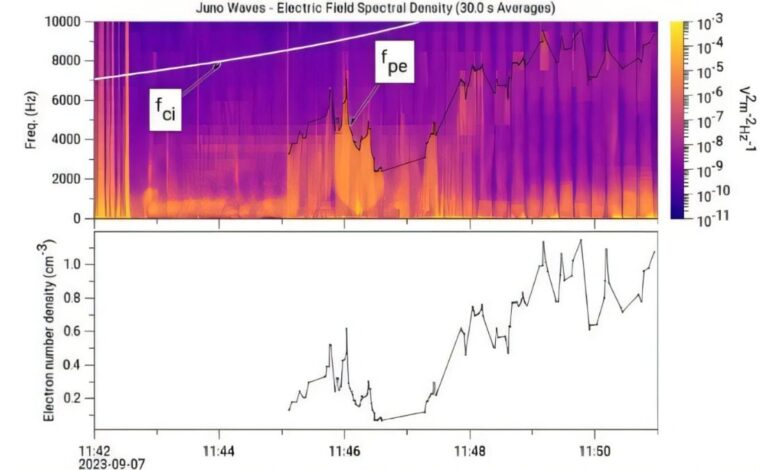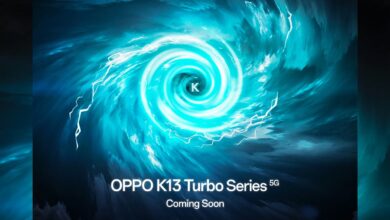Jupiter’s Unusual Plasma Waves: New Explanation Found

Unveiling Jupiter’s Plasma Wave Mystery at the North Pole
NASA’s Juno spacecraft has detected unusual plasma waves within Jupiter’s powerful magnetic field, sparking scientific curiosity. These waves, previously unobserved in planetary magnetospheres, have prompted researchers to seek explanations for their presence and behavior. A recent study published in Physical Review Letters offers a compelling theory regarding the origin and evolution of these enigmatic waves.
The Puzzle of Slow Plasma Waves
The Juno mission revealed that plasma waves in Jupiter’s far northern region exhibit surprisingly slow speeds. Considering Jupiter’s magnetic field is approximately 40 times stronger than Earth’s, this observation presented a significant challenge to existing models of plasma wave behavior. Scientists at the University of Minnesota, led by Robert Lysak, proposed a potential explanation involving the transformation of Alfven waves into Langmuir waves.
Understanding Plasma Waves: Langmuir and Alfven
Plasma waves are disturbances that propagate through the plasma, a state of matter consisting of charged particles, within a planet’s magnetosphere. Two primary types of plasma waves are relevant to this discovery:
- Langmuir waves: High-frequency oscillations generated by electrons.
- Alfven waves: Lower-frequency waves formed by ions (heavier particles).
The interaction and transformation between these wave types appear to play a crucial role in the observed phenomena at Jupiter’s north pole.
The Alfven-Langmuir Wave Transformation Theory
Lysak’s team hypothesized that Alfven waves, abundant near Jupiter’s north pole, could be converting into Langmuir waves. By analyzing data from Juno, the researchers compared the frequency and number of plasma waves, seeking correlations that would support their theory. The team suggests strong, upward-shooting electrons could be the energy source driving this transformation.
Implications for Jupiter’s Magnetosphere
This research indicates that Jupiter’s magnetosphere may harbor a novel type of plasma wave mode that manifests under conditions of high magnetic field strength. This discovery, initially made in 2016, has significant implications for our understanding of planetary magnetospheres and the complex interactions within them.
Further Research and Future Directions
The discovery of these unusual plasma waves and the proposed explanation open new avenues for research into Jupiter’s magnetosphere and the behavior of plasmas in extreme environments. Future studies will focus on:
- Detailed analysis of Juno data to further validate the Alfven-Langmuir wave transformation theory.
- Modeling the energy transfer mechanisms that drive the wave conversion process.
- Investigating the role of these waves in the overall dynamics of Jupiter’s magnetosphere.
Plasma Wave Characteristics
| Wave Type | Particle | Frequency | Speed |
|---|---|---|---|
| Langmuir | Electrons | High | Fast |
| Alfven | Ions | Low | Slow |
The Broader Context
Understanding plasma waves is crucial for comprehending the behavior of space weather, which can impact satellites, communication systems, and even power grids on Earth. By studying these phenomena on Jupiter, scientists can gain valuable insights that can be applied to our own planet’s space environment.




